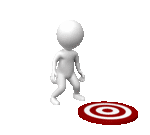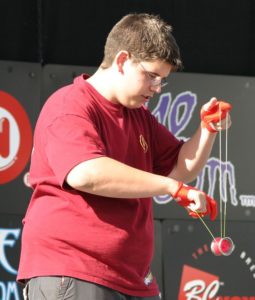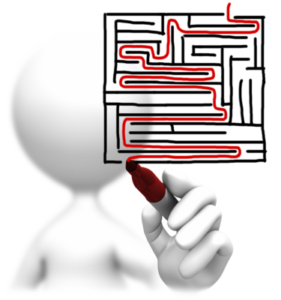
It’s happened again! I start a series of posts here on By’s Musings and partway through the series I pull the plug. Usually, I’ve satisfied myself that I have a good reason to change directions. This time I am fully persuaded that I have a good reason. Nevertheless, I know that trying to hit a moving target is very difficult, for both author and reader.

This past week, I signed a contract to deliver a rough draft of a book to my editor by Tuesday, October 1, 2019. Thus, for the next month, I must concentrate completely on finishing the rough draft of the book which I had tentatively titled A Field Guide to American Higher Education.

This means that I will be totally engaged in working on my book through the proposed launch date of Monday, December 2, 2019. This date is specifically selected to take advantage of a number of market factors. It will hit the market of prospective college students and their families just before the prime college hunting season of the spring and summer prior to their junior or senior year of high school. It will also be available for the Christmas shopping bonanza. I think it would make a very useful Christmas present for that adolescent child or grandchild approaching high school graduation.

If I miss the December 2 launch date, the next best launch dates are probably February 3, or September 1, 2020. If I miss a December launch, I miss the big Christmas gift possibilities. Adolescents aren’t interested in much of anything related to education in January. Most parents of prospective students have already made their summer plans prior to the official opening of summer. Thus, it is very important that I hit the target of December 2, 2019.

Why am I writing A Field Guide to American Higher Education? The typical field guide with which I grew up was a resource which provided important information to help users identify tools, select the most appropriate tool for a specific task, and provide instructions on how to use that tool most effectively. I firmly believe that American higher education is a tool. It is a tool that provides students with the means to better themselves and benefit society. It is a tool that is often misunderstood and misused. I saw this guide as a means to hopefully reduce the misunderstandings and lessen the misuses.

Unfortunately, I’ve found that the term Field Guide has lost its cache in today’s world. When I field-tested the term Field Guide with members of younger generations, many had no clue of what one was. Most had never seen or used one. I can use the term “younger generations” since I am only 18 months away from my semisesquicentennial birthday. For the non-Latin scholars among my readers: “My 75th birthday is just 18 months away.”

If the title Field Guide to American Higher Education is meaningless to a large part of my intended audience and doesn’t provide a suitable bait to lure them into looking at the book, I think I need a new title. How would you describe a resource which is designed to help individuals understand and find their way through the maze of the career and college choice process? I am open to any suggestions. Please leave them in the comment section below.

Working with an excellent coach from Chandler Bolt’s Self-Publishing School, I’ve come to the conclusion that on one hand I need to narrow the focus of my book, and on the other hand I need to broaden its scope. Using the terminology and processes from Ryan Levesque’s “ASK” methodology, I had to refine its niche. The book I first planned to write was scratching an itch that I felt. Unfortunately, few other people were feeling the same itch. My coach helped me see that I had more than enough material to satisfy the needs and answer the questions that thousands of adolescents and their families were facing as they traversed the bumps in the road during the difficult time of transition from child to adult. Many adolescents believe they have the world on a string. Although they have the string around their finger, they feel as if they are the yoyo spinning around.

Instead of focusing the book primarily on the complexities of American higher education, I needed to focus the book on what adolescents and their families should think about and do during those formative years of ages 17 to 25. How do adolescents find and define their calling? How can adolescents refine their calling into an intended vocation? How should they prepare for careers that fit in well with their calling and vocation? I needed to return to a process that I developed in the early 1970s, at the beginning of my academic career. I used three questions to guide the preparation of all course material I used when I taught. I employed the same three questions as the basis for the courses I designed and the textbooks that I wrote.

Recently, I discovered that my three questions are very similar to questions used in the KWL Reading Strategy Design, which was released in 1986. The KWL questions are “What do I know? What do I want to know? and “What did I learn?” My variation took the form of “What do I know?” “What do I need to know?” and “How can I get from what I know to what I need to know?”
Another variation of the questions is “Where am I?” “Where do I want to go?” and “What route can I take to go from where I am to my intended destination? For my upcoming book, the questions will take the form: “Who am I?” “Who do I want to be?” “How do I get from my current state of being to my desired position?”

With so many choices, how is a student to choose an appropriate path? The first section of my book is meant to assist adolescents and their families first deal with the complexities of career selection. How does an adolescent pick an appropriate career field?

As a Christian, I believe that God has a two-fold calling on an individual. The first call is an invitation to a personal relationship with Himself. The second call is a summons into a mission that God assigns that individual. For all individuals, I believe that we have an innate calling to a life’s mission. What are we meant to do with our lives? The first section of the book will help individuals find their calling. What keeps them up at night? What wakes them up each morning? What are they driven to accomplish? What keeps them dancing?

The second section of the book is a resource which helps readers find their way through the complicated and perplexing maze of finding themselves. It will help identify and differentiate the many different options in their preparation for their life calling. For some individuals, it will involve college. For others, it could involve career training or apprenticeships, or the military. In this section, I will help students identify and use the most appropriate preparation avenues for their future direction.

There’s another way in which you can help me. If you or an adolescent close to you wrestled with particularly troubling questions about career or college choices, I would love to hear from you. I have hundreds of stories about such struggles, but I can always use more real-life examples. If you would be willing to share your story with me, please leave a short description of it in the comment section below. Please, also include contact information so that I can communicate with you. I promise that your name, story, and contact information will never be divulged. If I use your story, all names and locations will be changed to guarantee anonymity.

My tasks for the next several months are well-defined. I will be writing, working with an editor, publishing and marketing my new book. These endeavors will leave little time for non-essential things. Thus, I will be taking a self-imposed hiatus from Facebook and Twitter to concentrate on the book. Please don’t feel slighted if I don’t respond to a Facebook or Twitter message. I’m not ignoring you! If something is important and you really need to reach me, please call me, leave a message, and I will respond when I can.
Leave a Reply